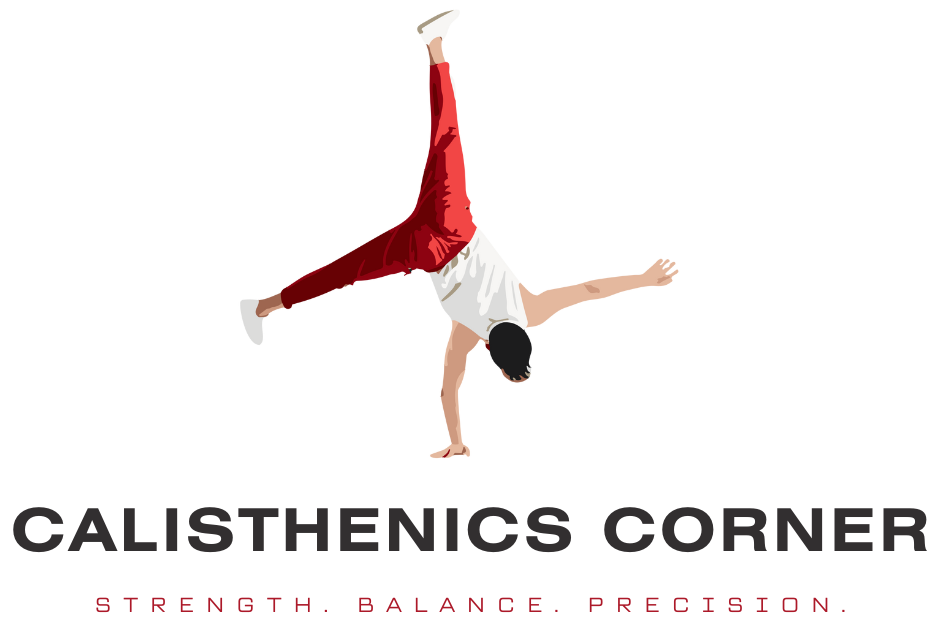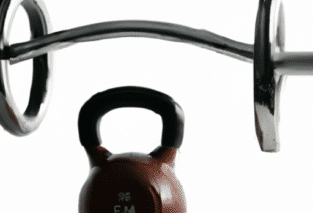Are you looking to take your fitness routine to the next level? If so, combining calisthenics with weight training might be just what you need. In this article, we will explore how you can incorporate calisthenics exercises into your weight training routine to enhance your strength, flexibility, and overall fitness. Whether you are a seasoned athlete or just starting your fitness journey, this guide will provide you with valuable tips and techniques to maximize the benefits of both calisthenics and weight training. Get ready to elevate your workout and achieve your fitness goals like never before!
1. Understanding Calisthenics
1.1 What is Calisthenics?
Calisthenics is a form of bodyweight exercise that utilizes your own body as resistance. It involves performing a variety of movements and exercises such as push-ups, squats, lunges, and planks, without the need for any external weights or equipment. Calisthenics focuses on improving strength, flexibility, and overall fitness through bodyweight movements.
1.2 Benefits of Calisthenics
Calisthenics offers numerous benefits for individuals of all fitness levels. One of the key advantages of calisthenics is its simplicity and accessibility. You can perform calisthenics exercises anywhere, anytime, making it a convenient option for those who don’t have access to a gym or equipment.
Not only does calisthenics help build functional strength, but it also enhances coordination, balance, and flexibility. The full range of motion involved in calisthenics exercises can improve joint mobility and prevent injuries. Additionally, calisthenics engages multiple muscle groups simultaneously, leading to a more efficient and effective workout.
1.3 Basic Calisthenics Exercises
There are various fundamental calisthenics exercises that you can incorporate into your routine to build strength and improve overall fitness. Push-ups, squats, lunges, planks, and mountain climbers are excellent examples of basic calisthenics exercises.
Push-ups target your chest, shoulders, and triceps, while squats focus on your lower body, particularly the quadriceps and glutes. Lunges work the muscles of your legs, including the hamstrings and calf muscles. Planks engage your core muscles and help develop stability, and mountain climbers provide a cardiovascular workout while targeting your core, shoulder, and leg muscles.
2. Understanding Weight Training
2.1 What is Weight Training?
Weight training, also known as strength training or resistance training, involves using external weights or resistance machines to increase muscle strength and size. It typically involves exercises such as dumbbell curls, barbell bench presses, and leg presses. Weight training places emphasis on progressively challenging the muscles through increased loads or repetitions.
2.2 Benefits of Weight Training
Weight training offers a multitude of benefits for individuals looking to build muscle, increase strength, and improve overall body composition. By lifting weights, you stimulate muscle growth and promote muscle hypertrophy. This, in turn, leads to an increase in metabolism, allowing you to burn more calories throughout the day.
Weight training also strengthens your bones, reducing the risk of osteoporosis and fractures. It can enhance functional strength, making everyday tasks easier. Additionally, weight training improves joint stability and helps prevent age-related muscle loss.
2.3 Basic Weight Training Exercises
There are several foundational weight training exercises that can be included in your workout routine. These exercises target major muscle groups and provide a solid foundation for strength development. Some examples of basic weight training exercises include bench presses, squats, deadlifts, shoulder presses, and bicep curls.
Bench presses primarily target your chest muscles, while squats work your quadriceps, hamstrings, and glutes. Deadlifts engage multiple muscle groups, including the back, glutes, and hamstrings. Shoulder presses focus on your deltoids, and bicep curls isolate the bicep muscles in your arms.
3. The Importance of Combining Calisthenics and Weight Training
3.1 Why Combine Calisthenics and Weight Training?
Combining calisthenics and weight training can offer a well-rounded approach to fitness and strength development. Each training method brings its own unique benefits and combining them can lead to even greater gains. Calisthenics focuses on bodyweight movements, improving functional strength, flexibility, and coordination. Weight training, on the other hand, targets muscle growth, strength, and power.
By incorporating both calisthenics and weight training into your routine, you can experience the dynamic advantages of each method. Calisthenics helps enhance your body control and functional movement patterns, which can improve your performance in weight lifting exercises. Weight training, in turn, can increase your overall strength, allowing you to perform calisthenics exercises with greater ease and efficiency.
3.2 Complementary Nature of Calisthenics and Weight Training
Calisthenics and weight training complement each other in terms of the muscles they target and the way they challenge the body. Calisthenics exercises emphasize bodyweight movements and engage multiple muscle groups simultaneously, promoting stability and functional strength. Weight training, on the other hand, allows you to target specific muscle groups and progressively overload them with added resistance.
By combining calisthenics with weight training, you can achieve a more balanced and well-rounded physical development. Calisthenics improves your body’s ability to move efficiently and effectively, while weight training emphasizes muscle growth and strength. Together, they create a comprehensive approach to fitness.
3.3 Enhanced Strength and Muscle Building
When you incorporate both calisthenics and weight training into your workout routine, you can experience enhanced strength and muscle-building benefits. Calisthenics exercises help improve muscle endurance, muscular control, and stability, while weight training allows for increased muscle hypertrophy and strength development.
The combination of these two training methods creates a synergistic effect that can lead to accelerated progress. The functional strength developed through calisthenics can support and enhance your performance in weight lifting exercises. Simultaneously, the strength gained from weight training can improve your ability to execute calisthenics movements effectively.
4. Incorporating Calisthenics and Weight Training into Your Routine
4.1 Determine Your Fitness Goals
Before incorporating calisthenics and weight training into your routine, it is important to define your fitness goals. Are you looking to build muscle, increase strength, improve overall fitness, or achieve a specific athletic performance? Understanding your objectives will help tailor your training regimen accordingly.
4.2 Developing a Balanced Routine
Once you have identified your goals, it’s time to develop a balanced routine that includes both calisthenics and weight training. To optimize your progress, you should allocate specific days or sessions for each type of training. For example, you could dedicate certain days of the week to calisthenics exercises and others to weight training exercises.
Incorporate a variety of exercises that target different muscle groups to ensure overall development and prevent muscle imbalances. Be mindful of the volume and intensity of your workouts to prevent overtraining and injury.
4.3 Warm-Up and Stretching
Prior to any workout session, it’s essential to warm up your muscles and prepare your body for the exercises ahead. A proper warm-up routine should include dynamic stretches and movements to increase blood flow to the muscles and improve joint mobility.
After your workout, it’s important to cool down and stretch to aid in muscle recovery and reduce post-workout soreness. Static stretches targeting the muscles worked during the session can help improve flexibility and prevent muscle tightness.
4.4 Alternating Between Calisthenics and Weight Training
To ensure a balanced training program, alternate between calisthenics and weight training sessions. This approach allows for recovery of specific muscle groups while focusing on others, minimizing the chance of overuse injuries.
Consider your overall weekly schedule and the number of training sessions you plan to have. Aim to have an equal distribution of calisthenics and weight training sessions throughout the week to maintain balance and avoid overtraining.
5. Sample Calisthenics and Weight Training Workout
5.1 Warm-Up
- Start with 5-10 minutes of light cardio exercises such as jogging or jump rope.
- Perform dynamic stretches, such as arm circles, leg swings, and hip rotations, to warm up the major muscle groups.
5.2 Calisthenics Circuit
- Push-ups: 3 sets of 10 repetitions
- Squats: 3 sets of 12 repetitions
- Lunges: 3 sets of 10 repetitions (each leg)
- Plank: 3 sets of 30 seconds
- Mountain climbers: 3 sets of 12 repetitions (each leg)
5.3 Weight Training Circuit
- Dumbbell bench press: 3 sets of 8-10 repetitions
- Barbell squats: 3 sets of 8-10 repetitions
- Deadlifts: 3 sets of 8-10 repetitions
- Dumbbell shoulder press: 3 sets of 8-10 repetitions
- Dumbbell bicep curls: 3 sets of 10-12 repetitions
5.4 Cool Down and Stretching
- Perform static stretches for all major muscle groups, holding each stretch for 20-30 seconds.
- Focus on stretching the muscles worked during the workout, such as the chest, legs, and arms.
6. Progression and Advancement
6.1 Tracking Your Progress
To ensure consistent progress, it’s important to track your workouts. Keep a record of the exercises, sets, repetitions, and weights used. This will allow you to monitor your strength gains and make necessary adjustments to your routine.
6.2 Increasing Intensity
As you become more comfortable with the exercises, gradually increase the intensity of your workouts. This can be achieved by adding resistance, increasing weights, or performing more challenging variations of the exercises.
Avoid sticking to the same routine for extended periods, as your muscles may adapt and plateau in terms of progress. Constantly challenge yourself by incorporating progressive overload principles into your training.
6.3 Experimenting with Different Exercises
To prevent boredom and maintain motivation, it’s important to explore and experiment with different exercises. There are numerous calisthenics and weight training variations and progressions available.
Try incorporating new exercises that target specific muscle groups or challenge your body in different ways. This will not only provide variety but also stimulate further muscle growth and development.
6.4 Seeking Professional Guidance
If you’re unfamiliar with calisthenics or weight training, or if you’re unsure about proper form and technique, it’s advisable to seek professional guidance. A certified personal trainer can assess your fitness level, help you set realistic goals, and create a tailored program that combines calisthenics and weight training effectively.

7. Balancing Calisthenics and Weight Training for Specific Goals
7.1 Strength and Hypertrophy
If your primary goal is to build strength and increase muscle size (hypertrophy), focus on weight training as the foundation of your program. Incorporate compound exercises that target multiple muscle groups, such as squats, deadlifts, and bench presses.
To complement your weight training, incorporate calisthenics exercises that challenge stability and promote functional strength. This combination will enhance overall muscular development and performance.
7.2 Endurance and Conditioning
For endurance and conditioning goals, emphasize calisthenics exercises that involve continuous movement and engage multiple muscle groups. Exercises like burpees, jumping jacks, and high knees can elevate the heart rate and improve cardiovascular fitness.
Supplement these calisthenics exercises with lighter weights and higher repetitions in your weight training routine. This will improve muscular endurance and support your conditioning goals.
7.3 Mobility and Flexibility
To enhance mobility and flexibility, prioritize calisthenics exercises that promote joint mobility and proper movement mechanics. Exercises such as yoga flows, bodyweight squats, and dynamic stretches will improve flexibility and range of motion.
Incorporate weight training exercises that focus on controlled movements and deep muscle stretches, such as Romanian deadlifts and overhead squats. These exercises can further enhance your mobility and flexibility.
8. Nutrition and Recovery
8.1 Fueling Your Workouts
To optimize your performance during calisthenics and weight training, it’s crucial to fuel your body properly. Consume balanced meals that include a mix of carbohydrates, protein, and healthy fats.
Prioritize carbohydrates for energy, which can be obtained from sources like whole grains, fruits, and vegetables. Include lean protein sources, such as chicken, eggs, and tofu, to support muscle-recovery and growth. Healthy fats from sources like avocados and nuts provide essential nutrients for overall health and well-being.
8.2 Post-Workout Nutrition
After your workouts, it’s important to replenish your body’s energy stores and aid in muscle recovery. Consume a balanced meal or snack within 30-60 minutes of finishing your workout.
Include a combination of carbohydrates and protein to replenish glycogen stores and promote muscle repair. A post-workout protein shake or a meal consisting of lean protein and complex carbohydrates can be beneficial in this regard.
8.3 Rest and Recovery
Rest and recovery are essential components of any training program. Allow your body adequate time to recover and adapt to the stress imposed during workouts.
Incorporate rest days into your weekly routine to prevent overtraining and burnout. Aim for 7-9 hours of quality sleep each night to support muscle recovery, hormone regulation, and overall well-being.
8.4 Role of Sleep
Sleep plays a crucial role in optimizing athletic performance and overall health. During sleep, the body repairs and regenerates tissues, balances hormones, and enhances cognitive function.
Ensure you prioritize a consistent sleep schedule and create a sleep-friendly environment. Avoid electronic devices before bedtime, establish a relaxing bedtime routine, and create a dark and quiet sleeping environment.
9. Common Challenges and How to Overcome Them
9.1 Time Management
Balancing calisthenics and weight training can be challenging, especially if you have a busy schedule. Plan your workouts in advance and prioritize your fitness goals. Short, intense workouts or circuit training can be time-efficient options.
Consider splitting your workouts into smaller sessions throughout the day if you’re unable to dedicate long periods of time. For example, you can do a quick calisthenics circuit in the morning and weight training in the evening.
9.2 Balancing Intensity and Volume
It’s important to strike a balance between intensity and volume to prevent overtraining and injuries. Gradually increase the intensity and volume of your workouts over time and allow for proper rest and recovery between sessions.
Listen to your body and adjust your training accordingly. Incorporate deload weeks into your training program to give your body a break and promote recovery.
9.3 Muscle Imbalances
When incorporating both calisthenics and weight training, it’s crucial to address and prevent muscle imbalances. Imbalances can occur when certain muscle groups are overdeveloped or underdeveloped in relation to others.
Include exercises that target opposing muscle groups to ensure balanced muscle development. For example, if you are performing push-ups, incorporate exercises that target the muscles of the upper back, such as rows or pull-ups.
9.4 Preventing Overtraining
Overtraining can occur when you don’t allow your body enough time to recover between workouts or if you consistently train at high intensities. Overtraining can lead to decreased performance, increased risk of injuries, and a decline in overall well-being.
To prevent overtraining, ensure proper rest and recovery between sessions. Incorporate rest days into your routine and listen to your body’s signals. If you experience chronic fatigue, muscle soreness, or a decline in performance, it’s important to take a step back and allow for adequate recovery.
10. Precautions and Safety Tips
10.1 Listen to Your Body
Pay attention to how your body feels during and after workouts. If you experience pain or discomfort, it’s important to stop the exercise and assess the possible causes. Consult with a healthcare professional if necessary.
10.2 Proper Form and Technique
Maintain proper form and technique during all exercises to prevent injuries. Improper form can place unnecessary stress on your joints and lead to muscle imbalances. Seek professional guidance or educational resources to ensure you’re performing exercises correctly.
10.3 Gradual Progression
Gradually progress your workouts by increasing weights, repetitions, or difficulty of exercises. Avoid sudden jumps in intensity or volume, as this can increase the risk of injuries. Allow your body ample time to adapt and recover.
10.4 Injury Prevention
To reduce the risk of injuries, warm up properly before each session and focus on adequate stretching and mobility exercises. Incorporate rest days and prioritize proper nutrition and sleep to support optimal recovery and reduce injury risk.
Incorporating calisthenics and weight training into your routine can provide a holistic approach to fitness and strength development. By combining these two training methods, you can achieve a well-rounded physique, improved strength, and enhanced overall fitness. Remember to establish clear goals, develop a balanced routine, fuel your body properly, and prioritize rest and recovery to maximize your progress and minimize the risk of injury.









